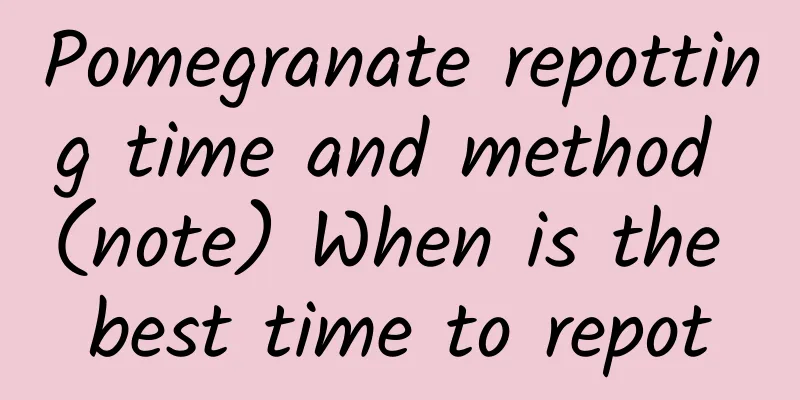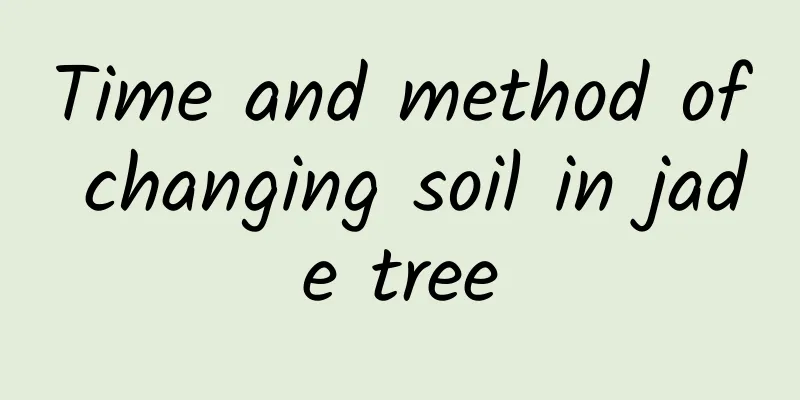Pomegranate repotting time and method (note) When is the best time to repot

Pomegranate repotting timeWhen repotting a pomegranate, you should pay attention to the timing. It is usually done in spring or autumn when the temperature and climate are relatively suitable, which can reduce damage to it and promote faster recovery of growth. The temperature is high in summer, and repotting will inevitably cause wounds, which are prone to bacterial infection. The temperature is low in winter, and repotting is prone to frost damage. Pomegranate repotting methods and steps1. Root pruning When repotting the pomegranate, pay attention to root pruning. After removing it from the pot, cut off some old roots, dead roots, diseased roots, and rotten roots. After pruning, disinfect and dry them in the sun. This way, the plant can absorb water and fertilizer better in the later stage, which is conducive to adapting to the pot and subsequent growth. If the roots are not trimmed, it will be difficult for the plant to adapt to the pot and its later growth will also be affected. 2. Prepare the soil When repotting the pomegranate, you need to replace the potting soil with new one. All the soil can be poured out and re-prepared with a loose, breathable and fertile soil. You can use a mixture of garden soil, leaf mold, sandy soil and base fertilizer. Choose a flowerpot that is larger than the original one to ensure that there is enough space for growth in the later stage. 3. Potting method Place the pomegranate vertically in the pot, allowing the roots to hang down and spread naturally, then fill in soil and water it thoroughly to allow the roots to take hold. Stop watering after water seeps out from the bottom of the pot, then place it in a well-ventilated sunny place for maintenance, ensuring the temperature is suitable, and provide appropriate shade when exposed to strong light. Pomegranate care after repottingWhen repotting a pomegranate, you must not only pay attention to the method, but also pay attention to the subsequent maintenance and management. The plants that have just been repotted are very weak and need to be maintained in a ventilated environment, in a dim and warm place. After potting, you must also water the roots once to help them adapt to the pot faster. If properly maintained, they will adapt to the pot in about 5-7 days. |
<<: How and when to plant buckwheat (field management) When is the best time to plant?
Recommend
What is the best month to plant sapphire grapes?
When is the Sapphire grape planted? Sapphire grap...
When is the best time to sow seeds?
Sowing time of Koelreuteria paniculata seeds The ...
The difference between rotor lotus and clematis
1. Differences in roots Both belong to the Ranunc...
How to grow Jade Plant in autumn
1. Sufficient water For Jade Plant, its growth pe...
How to make a young plum tree bonsai look old
Wormholes: During the season when ants are most a...
The best time and method for growing sweet potato seedlings
The best time to sow sweet potatoes is usually be...
Can I change the pot of succulent plants without changing the soil? Is wet soil or dry soil better?
1. Is it possible? When repotting succulents, you...
Potted flowers not blooming? Soil fertilizer is important!
Only watering, no fertilization Many novice flowe...
The difference between rubber tree and rubber tree
1. Leaf Difference The rubber tree has finger-lik...
Several varieties of classic hairy style
1. Butterfly The height of the butterfly plant is...
Common species of pitcher plants
Nepenthes bicalcarata It is the largest pitcher p...
When is the best month to prune apple trees? When is the best time to prune apple trees?
Apple tree pruning time Apple trees can be pruned...
Symptoms and treatment of edema in piglets
Piglet edema disease is a common disease in pig f...
What does the pine parasitic tree do and what does it look like?
1. The efficacy and function of pine parasitic tr...
How to grow Albizia Julibrissin on the balcony, what should be paid attention to
1. Can it be grown on the balcony? When the Albiz...









